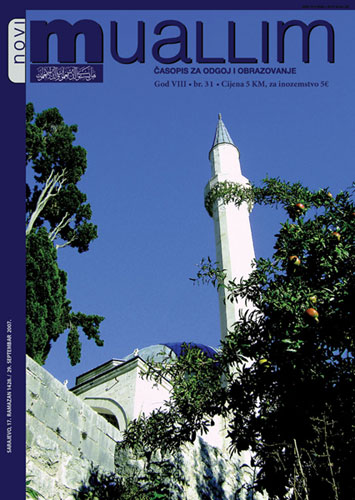SIGNIFICANCE OF INSTITUTIONAL PRESERVATION OF A COLLECTIVE IDENTITY WITH SPECIAL REFERENCE TO THE MUSEUM OF THE CITY OF ZENICA
DOI:
https://doi.org/10.26340/muallim.v8i31.1016Abstract
The arrival of the new government, folllowing the end of the World War II, brought a dramatic and even brutal end to the traditional ways of living and strong attempts at establisshing new identity not only for an individual but for the entire cities. This was particularly evident in Zenica, where the new regime had something special in mind. Indeed, it intended to build a totally new proletarian identity, one far removed from the previous one that was fouunded on the Islamic cultural heritage. While Sultan Ahmad mosque and madrasah stood at the center of the “old Zenica”, the “new Zenicca” was to be built around the Steel Factory and uniform residential buildings. This article examines relationship of the institutions in terms of the collective identity and attempt to prove that identity cannot be validly preserved without organized institutioons to care for it. The Museum of the City of Zenica is an indicative example of this thesis. In the earlier period, when the ideological state was present, the Museum’s actions were significcantly directed at developing that type of identtity. Now, it is turning to its primary purpose to preserve and nourish cultural identity of the community within which it exists.
Downloads
Published
How to Cite
Issue
Section
License
Naknada:
a. Časopis ne naplaćuje naknadu za obradu članaka (APC) i naknadu za podnošenje članaka.
Autori koji objavljuju u ovom časopisu pristaju na sljedeće uvijete:
- Autori zadržavaju autorska prava i pružaju časopisu pravo prvog objavljivanja, pri čemu će rad jednu godinu po objavljivanju biti podložan licenci Creative Commons imenovanje koja omogućuje drugima da dijele rad uz uvijet navođenja autorstva i izvornog objavljivanja u ovom časopisu.
- Autori mogu izraditi zasebne, ugovorne aranžmane za ne-ekskluzivnu distribuciju rada objavljenog u časopisu (npr. postavljanje u institucionalni repozitorij ili objavljivanje u knjizi), uz navođenje da je rad izvorno objavljen u ovom časopisu.


